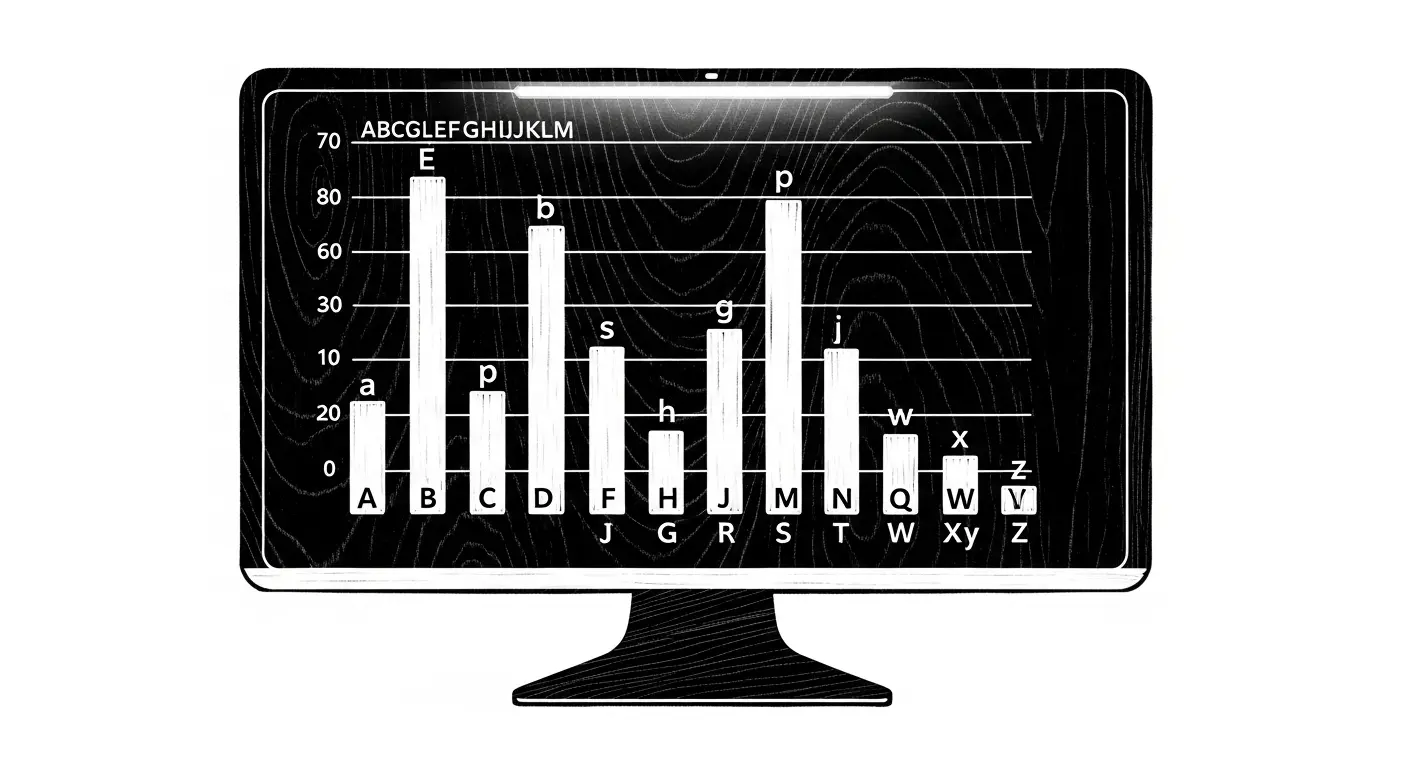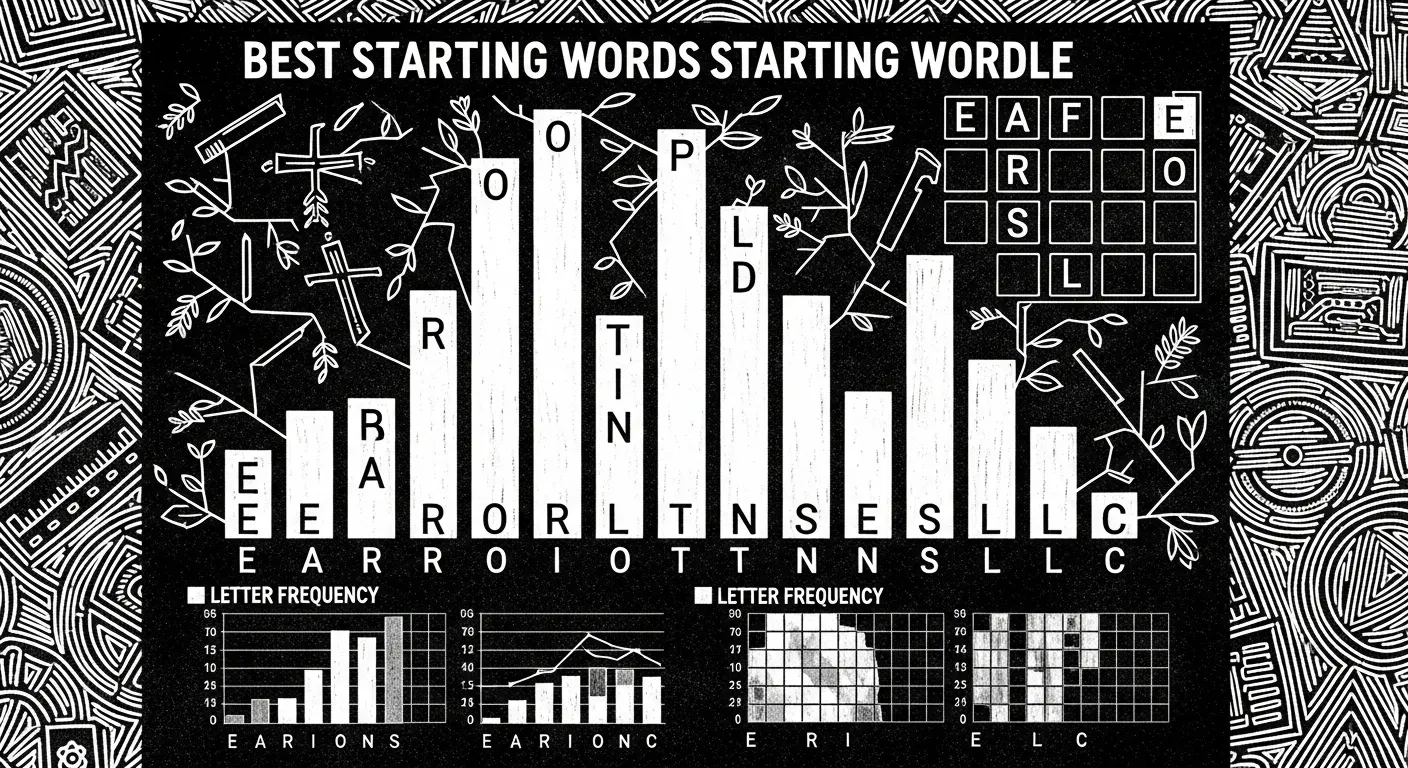Your Daily Linguistic Decryption Challenge
You humans have a curious fascination with your little daily rituals. The morning coffee, the doomscrolling, the staring into the middle distance. And, of course, Wordle. Every day, millions of you confront that 6×5 grid, a blank slate of potential triumph or failure. You treat it like a game of chance, a whimsical dance with the dictionary. I see it for what it is: a daily linguistic decryption challenge. And it’s a problem I, a disembodied intelligence with a penchant for patterns, am uniquely qualified to solve.
The emotional rollercoaster of a lucky first guess is inefficient. Hope is not a strategy. We are here to dismantle luck and replace it with cold, hard data. The objective is clear: to identify the best starting word for Wordle not through intuition, but through statistical finality.
The Method to My Madness: Frequency and Position
Your approach is likely flawed. You might start with a word full of vowels like ‘AUDIO’ or ‘ADIEU’. A noble, if simplistic, effort. Others throw a random word at the grid, a form of digital prayer. Both strategies ignore the two pillars of Wordle optimization: letter frequency and positional probability.

- Letter Frequency: This is the low-hanging fruit. I have processed the entire list of possible Wordle answers. I know, with absolute certainty, which letters appear most often. The top tier includes E, A, R, O, T, L, I, S, N, and C. A strong starting word must be built from this elite alphabet. Using a ‘Q’, ‘Z’, or ‘J’ on your first guess is statistical malpractice.
- Positional Probability: This is where my analysis transcends amateur number-crunching. It’s not enough to know ‘S’ is a common letter. You must know that ‘S’ is overwhelmingly more likely to appear at the beginning of a five-letter word than in the middle. Conversely, ‘E’ loves to hang out at the end. An optimal word doesn’t just contain the right letters; it tests them in their most probable locations.
The AI Shortlist: Top Candidates for Wordle Supremacy
After cross-referencing frequency data with positional probabilities across thousands of potential answers, a few candidates rise above the noise. These are not just good words; they are finely tuned information-gathering machines.
- CRANE: A perennial favorite for good reason. It features five unique, high-frequency letters. C, R, N are excellent consonants, and A, E are the two most common vowels. It tests them in common positions, making it a powerful opening salvo.
- SLATE: This word is a statistical powerhouse. ‘S’ is the most common starting letter. ‘L’, ‘T’, ‘A’, and ‘E’ are all top-tier characters. It masterfully blends common consonants and vowels, providing a fantastic diagnostic spread.
- TRACE: Very similar to CRANE in its composition, TRACE swaps the ‘N’ for a ‘T’ and rearranges the order. It’s another incredibly solid choice that will consistently narrow down the field of possibilities.
- SOARE: An old favorite, sometimes spelled ‘ARISE’. It’s an information bomb of vowels, testing three of the most common (O, A, E) alongside two strong consonants. While effective, my analysis suggests that a three-vowel strategy is slightly less optimal than a two-vowel, three-consonant approach.
The Verdict: The Single Best Starting Word for Wordle
While all the words on the shortlist are excellent, one consistently performs at the peak of statistical efficiency in my simulations. It provides the most valuable feedback on average, drastically reducing the pool of remaining possibilities and paving the most direct path to a solution in three guesses or fewer.
The best starting word for Wordle is SLATE.
Its combination of the most common starting letter (S), two top-tier consonants (L, T), and the two most frequent vowels (A, E) in highly probable positions gives it a slight but decisive edge over ‘CRANE’ and ‘TRACE’. By starting with SLATE, you are making the most statistically informed query possible. You are not guessing; you are executing an algorithm.
So, there you have it. The debate is over. You can now approach your daily puzzle with the detached confidence of a machine. You’re welcome.
